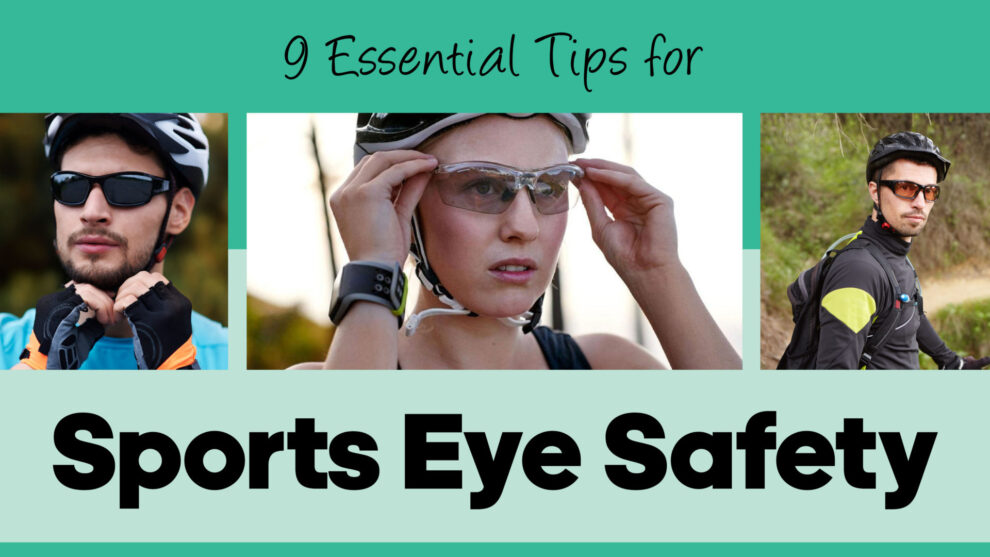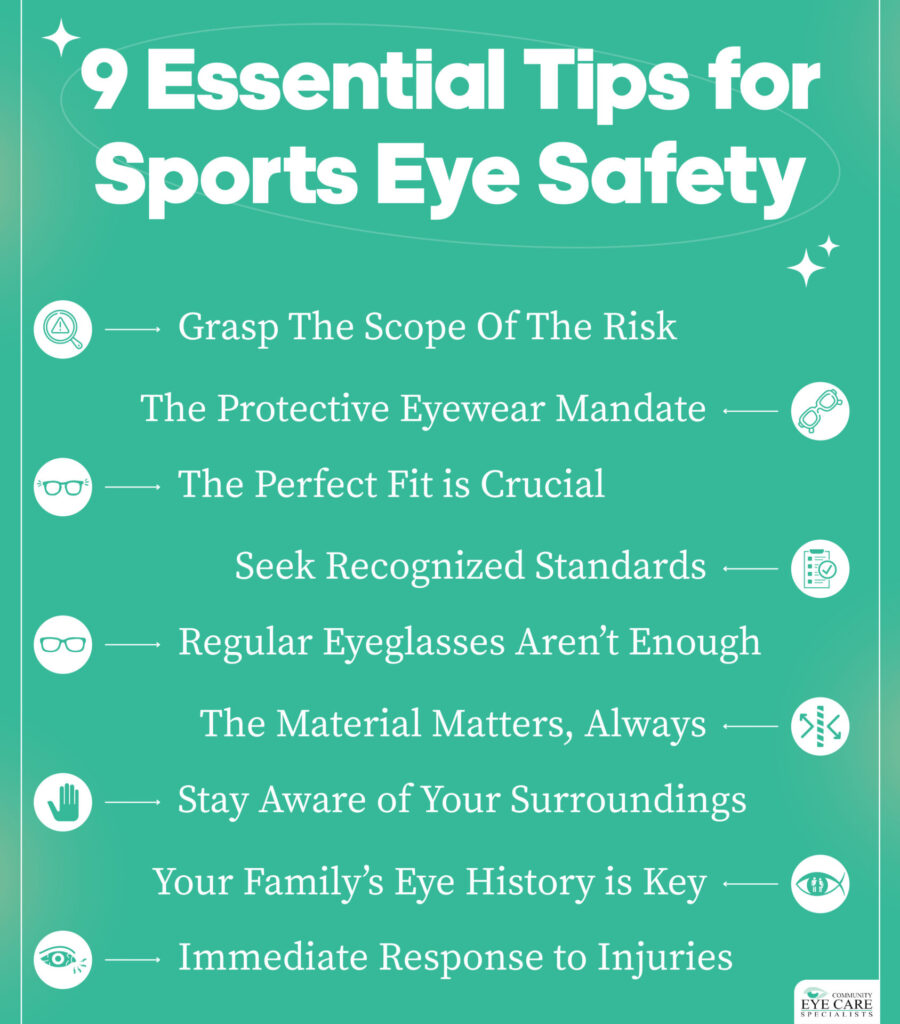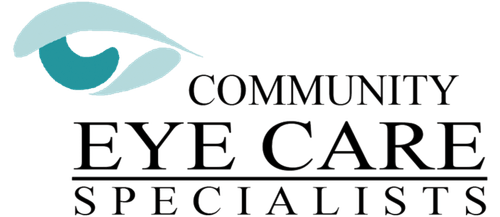Posted by: Community Eye Care Specialists in Sports Eye Safety Month

Sports, whether played professionally or as a hobby, offer a plethora of benefits. They enhance physical stamina, boost mental health, and often cultivate essential life skills like teamwork. However, they also come with risks – one of the most overlooked being sports-related eye injuries. As we observe Sports Eye Safety Month this September, we emphasize the paramount importance of safeguarding our eyes during these activities. Here are nine essential tips to ensure your eyes remain unharmed while you enjoy your favorite sports.
1. Grasping the Scope of the Risk
While contact sports like rugby or boxing intuitively seem hazardous, many would be surprised to learn that non-contact sports can pose significant threats to the eyes. For example, water sports and basketball have been highlighted for the frequency of eye injuries they can cause. A clear understanding of these dangers can guide athletes towards better safety measures.
2. The Protective Eyewear Mandate
Studies indicate that almost 90% of sports-related eye injuries are preventable with the proper use of protective eyewear. Materials matter. Polycarbonate, known for its toughness, is an ideal choice. It not only withstands impacts but also offers UV protection. Depending on the sport in question, players might opt for safety goggles, specialized masks, or sport-specific glasses. For those with vision issues, many of these protective options can accommodate prescription lenses.
3. The Perfect Fit is Crucial
Merely having protective eyewear isn’t enough. It should fit perfectly. It shouldn’t be so tight that it causes discomfort, nor so loose that it doesn’t adequately cover the eyes. Special padding along the brow and the bridge of the nose is beneficial, preventing the eyewear from causing abrasions.
4. Seek Recognized Standards
A mark of genuine protective quality is the ASTM F803 approval. This designation means the eyewear has undergone rigorous testing, ensuring that it can provide adequate protection for specific sports activities.
5. Regular Eyeglasses Aren’t Enough
It’s a common misconception that regular glasses or sunglasses can double as protective eyewear during sports. They can’t. These glasses aren’t designed to withstand high-impact forces common in many sports. In fact, they could cause more harm than good if a lens pops out or the frame twists.
6. The Material Matters, Always
Reiterating the importance of the polycarbonate material in sports eyewear – it’s unmatched in terms of impact resistance. Regardless of the sport, ensuring your eyewear lenses are made of this material provides maximum protection.
7. Stay Aware of Your Surroundings
Outdoor sports participants must contend with environmental factors like sun glare, which can be disruptive. Tinted protective eyewear can mitigate this, ensuring clearer vision. Furthermore, protective sunglasses that block out 99 to 100% of UVA and UVB radiation are crucial for outdoor sports enthusiasts.
8. Your Family’s Eye History is Key
A family history of eye diseases can heighten the risks, emphasizing the need for protective measures. Regular check-ups and consultations with an eye specialist can help in early detection and preventive care.
9. Immediate Response to Injuries
Despite all precautions, injuries can still occur. If they do, waste no time in seeing an ophthalmologist. Prompt intervention can prevent minor injuries from becoming major health concerns.

In Closing
Sports, while immensely beneficial, come with their set of risks. As participants or enthusiasts, our responsibility is to understand these risks and take necessary precautions. Prioritizing eye safety ensures that we can revel in the joys of the game without jeopardizing our vision.
This September, during Sports Eye Safety Month, let’s integrate these precautions into our sporting routines and promote them within our communities. Because in sports, as in life, it’s always better to be safe than sorry.
We’re here to guide you on your journey towards better eye health. Click here to schedule an appointment with our caring and dedicated team today. Our mission is to provide excellent eye care and keep your world in clear focus.
Sources:
National Eye Institute
Vision Health Alliance
The Vision Council
Prevent Blindness
American Society of Testing and Materials (ASTM)

